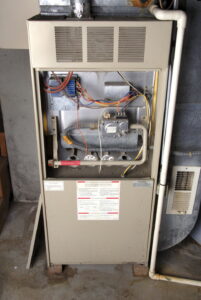Technology improves with each passing year. We as consumers reap the benefits. The furnaces of today are unrecognizable compared to furnaces from decades ago.
What was once considered top-of-the-line is now outdated as we learn new ways to heat our homes efficiently.
If you have an older system, you may wonder if it’s time for furnace replacement in Fort Wayne, IN. While furnaces can last for upwards of 30 years, that doesn’t mean you’re getting the most out of your unit anymore.
Keep reading to learn more about furnaces of the past, furnaces today, and how you can get even more efficiency when it comes to heating your home.
Measuring Furnace Efficiency
It’s not enough for us to tell you that furnaces are more efficient than one, two or even three decades ago. So we want to break it down and give you a better explanation.
Furnace efficiency is measured using a scale called AFUE, which is an acronym for annual fuel utilization efficiency. It estimates the percentage of natural gas that your furnace actually converts into heating power versus energy that gets lost in the process of creating heat for your home.
Older Furnaces
Furnaces from decades past usually had AFUE ratings of between 56% and 70%. This means that anywhere from a third to nearly half of all energy consumed by a furnace was wasted. Heat is usually lost when it leaves the combustion chamber through the flu before ever heating your home.
Newer Furnaces
As technology has improved, newer furnaces now have AFUE ratings that start at 80% and go as high as 98.5%, meaning that as little as 1.5% of the energy gets lost during the heating process.
If you want to ensure that you have the most efficient heater possible, look for a furnace with an Energy Star certification. This means that your furnace has at least 90% AFUE. They were furnaces, are able to achieve these high ratings through improvements including:
- Heat exchangers that aren’t as heavy so that they can heat the air better
- Electronic ignition systems that don’t rely on a standing pilot light that uses continuous power even when heat is off
- Airtight combustion chambers that don’t allow heat to escape
- Fans that offer variable speeds depending on the heating needs
Upgrading Your Furnace
If you have an older furnace, you may be tempted to keep it in place just because it is still running. However, you may be spending a lot more on your energy bills than you need to.
A newer furnace could save you as much as half on your energy costs for heating your home. In addition to older furnaces being less energy efficient to begin with, they also lose efficiency with each passing year, due to normal wear and tear and age.
Plus, if you bought your home with an existing furnace, you don’t actually know how well it was cared for by the previous owners. When you invest in a new furnace, you can keep up with annual maintenance and ensure that your furnace remains at peak condition for years to come. Sure, it’s an expense, but it’s also an investment in your family’s comfort, and in your future energy savings.
True Comfort, True Savings. Contact our team today to schedule an appointment for furnace service.

